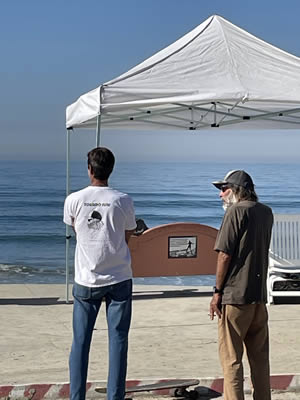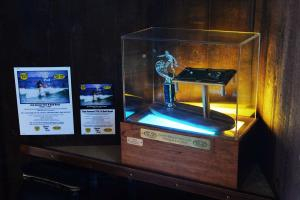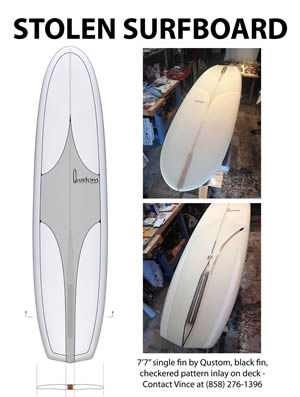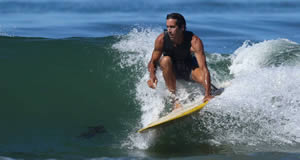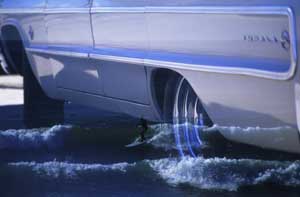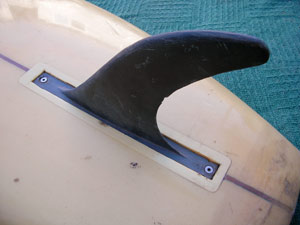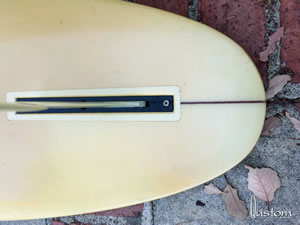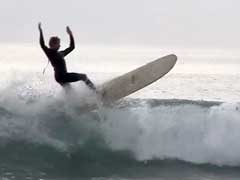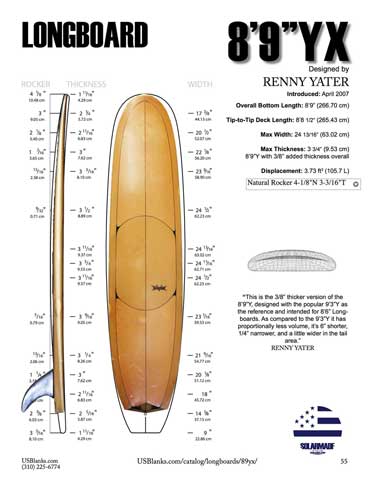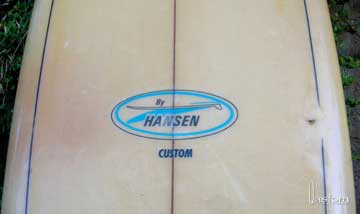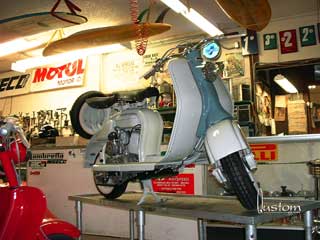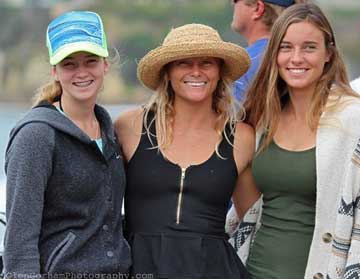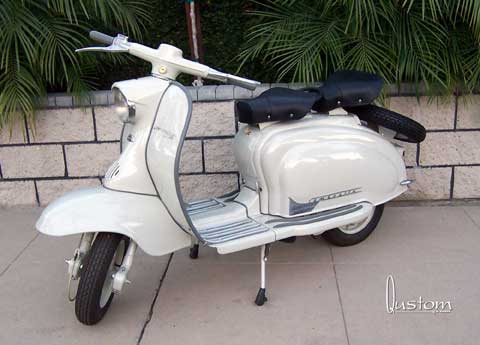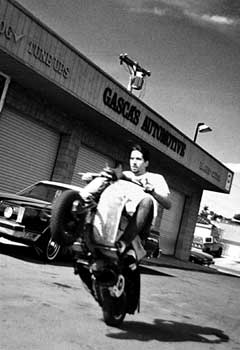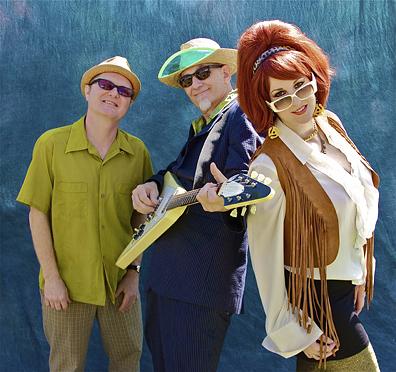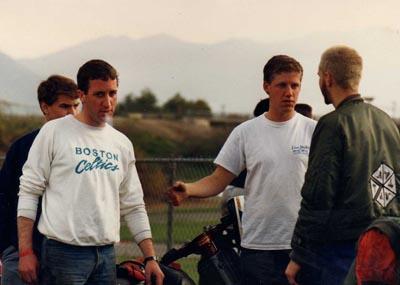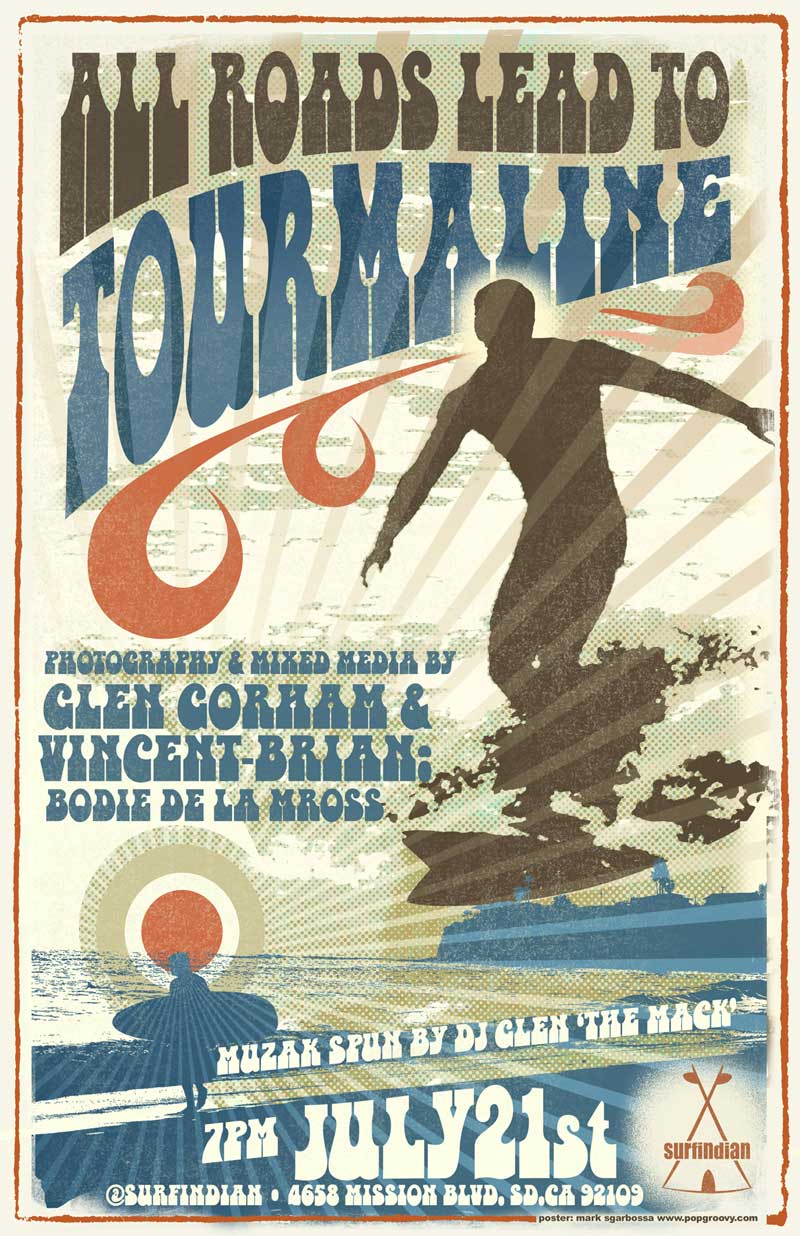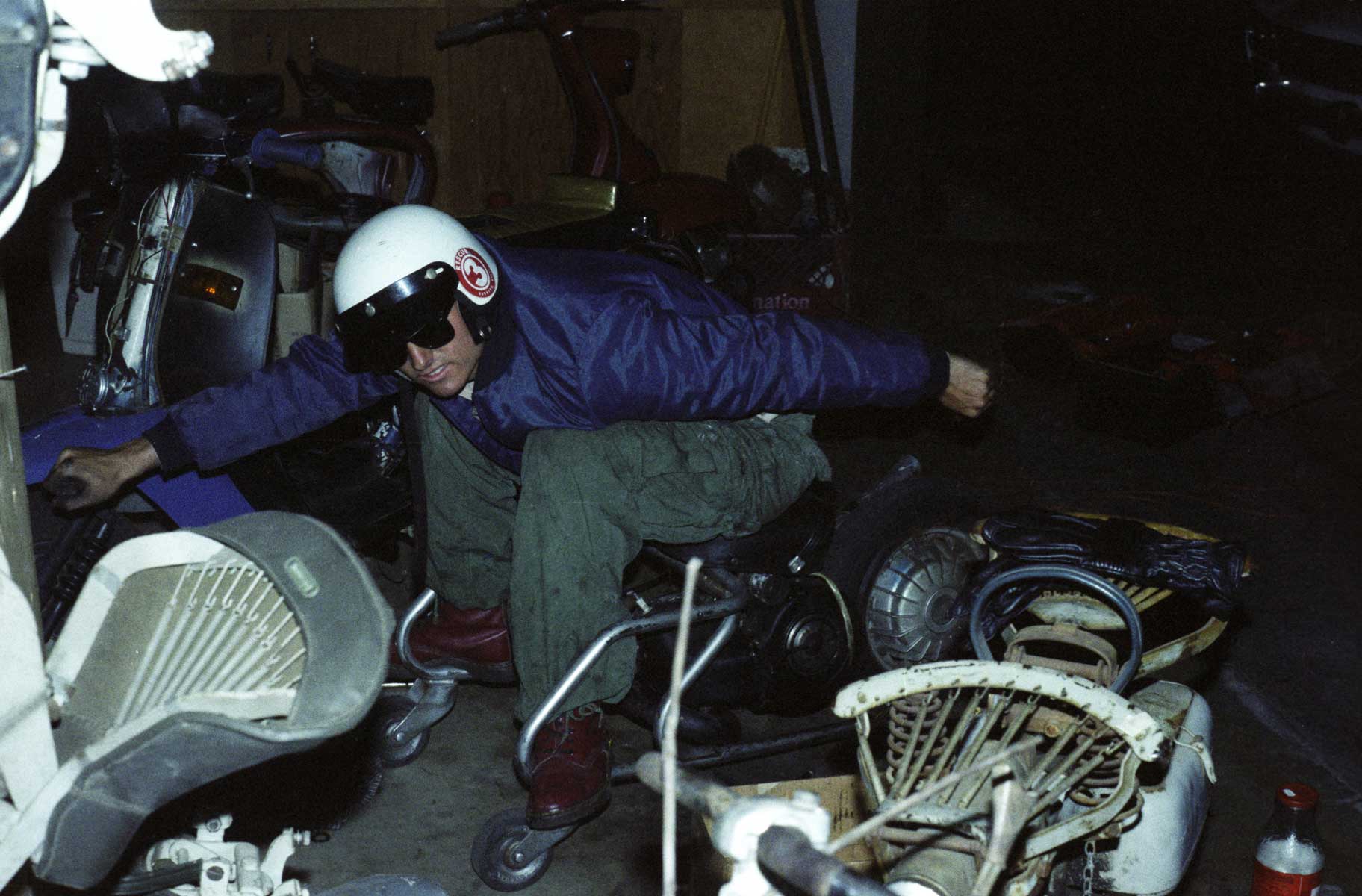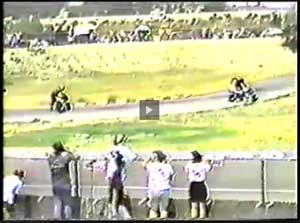Surfing Projects
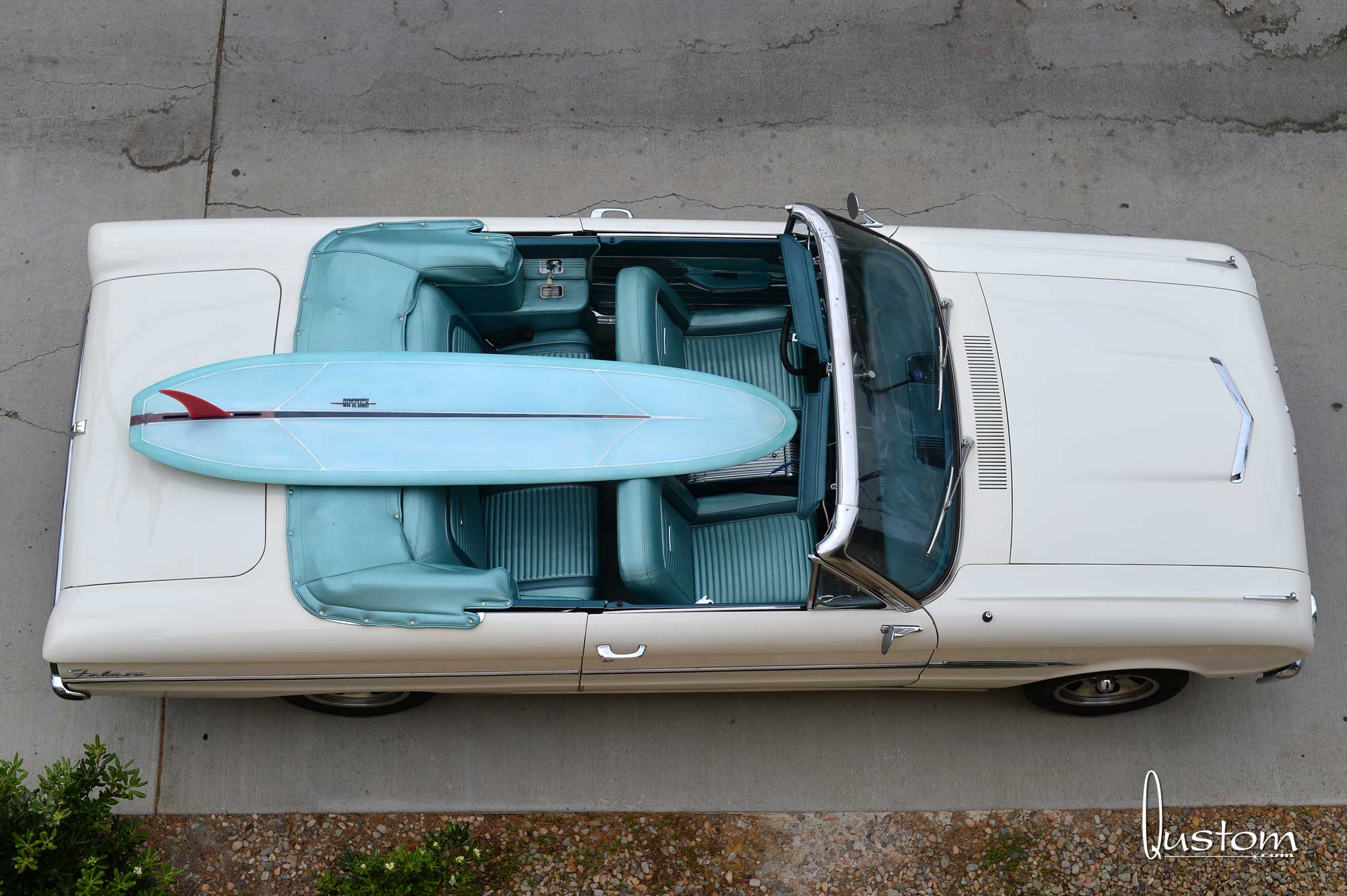
- Category: Surfing Projects
- Hits: 4125
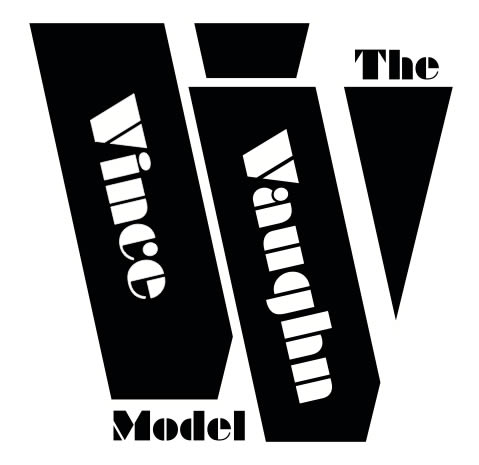 Board #4 is finally finished and in the water. This one got started when I was shaping and building the Viceroy in my garage and a neighbor named Vaughn took an interest in what I was doing. We got to talking about my wedge stringer designs, and when I told him about my ideas for the "Bow Flex" stringer he was all ears. Before long he was motivated enough to have me build him a board along similar lines but smaller. We agreed on 7'6", using the 82AX blank from US Blanks as the starting point.
Board #4 is finally finished and in the water. This one got started when I was shaping and building the Viceroy in my garage and a neighbor named Vaughn took an interest in what I was doing. We got to talking about my wedge stringer designs, and when I told him about my ideas for the "Bow Flex" stringer he was all ears. Before long he was motivated enough to have me build him a board along similar lines but smaller. We agreed on 7'6", using the 82AX blank from US Blanks as the starting point.
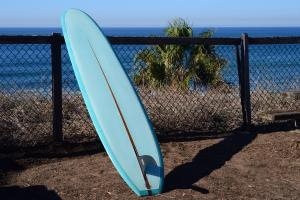
- Category: Surfing Projects
- Hits: 7673
"A viceroy is an official who runs a polity in the name of and as the representative of the monarch of the territory."
-- Wackopedia
This board began as an idea to replicate the tail of a 9'4" Steve Seebold shaped noserider that I had acquired a few years back, only in a lighter and more maneuverable 9'0" length. That board had been shaped backwards with reverse rocker and loads of kick in the tail. I loved how flickable it was when you stepped back, even though it was a fairly beefy noserider with a wide nose and lots of concave.
My goal with the Viceroy was to get a similar feeling at the back, but with a more pulled in nose and less rocker to maximize speed. The 93AX blank I was using was going to limit me to a 9'0" maximum length, which would just get me in the door at longboard contests.
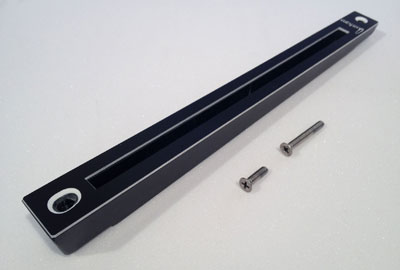
- Category: Surfing Projects
- Hits: 38958
Old boards and old fins
This story starts with a borrowed Gordon and Smith "Midget Farrelly Stringerless" that I took for a spin courtesy of Sam at Taco Surf, and a fin box that had been ripped from a board and washed ashore in the cove at Tourmaline with the fin still attached, only to be found by Steve The Kneeboarder (see "Stoked and Broke" by Cyrus Sutton and Ryan Burch).

- Category: Surfing Projects
- Hits: 21964
My goals for this project are simple:
- create the proverbial "one board quiver"
- create the most exciting surfboard ever ridden!
Surfboard design, like many things, is a process of give and take, of exploring limits and then finding a middle ground that works best for any given set of conditions. Our shared liquid playground offers an infinite set of variables that seem to make building the perfect board an impossible task. Factors such as swell direction and storm proximity, wave height, pitch, speed, smooth or choppy surface conditions, lefts or rights, ocean floor contours, beach breaks, point breaks, reef breaks, flat faced or hollow tubes, undercurrents and rips, winds and tides all combine to determine the type of surfing and surf craft that is best for the current conditions.
And just as wave conditions depend on infiinite combinations of the above factors, board design also offers an infinite combination of rail outline, rocker, thickness, fin type and placement, rounded hull designs or concave(s), and so on, each combining to form an overall riding experience that hopefully allows the rider's skill level to shine through in whatever conditions exist at that moment in time.
Even moderately experienced surfers know that the more rocker a board has and the curvier its outline, the better it will turn but the slower it will go in a straight line. Conversely, a very flat board with a straight outline is going to travel like a missile through the water, but good luck turning it without stomping on the tail to slow it down and then really cranking one rail into the water. See Ryan Burch's experimentations with finless chunks of rectangular foam at about the 7:00 mark of this video for example.
The genesis for the idea of this project came from three sources:
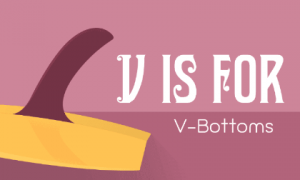
- Category: Surfing Projects
- Hits: 21446
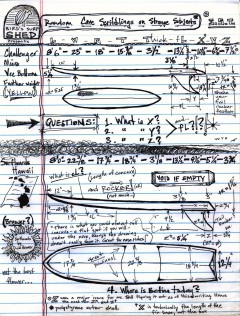
The vee bottom boards masterfully ridden by Australian Bob McTavish in the mid '60s were groundbreaking designs that foresahadowed the shortboard revolution that would soon follow. To see the progression of the design, fast forward just a couple of years to Billy Hamilton, Mark Martinson, and Keith Paull at Hossegor and Biarritz in the late '60s flick "Waves of Change", and more recently to Ryan Burch on a "V bowls" design in the wonderful short "The Shakes".
Continuing this progression of the vee bottom design - but with some radical new elements and construction concepts - is high on my list with the launch of Qustom Product.
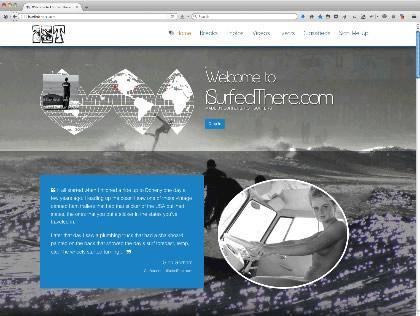
- Category: Surfing Projects
- Hits: 11196
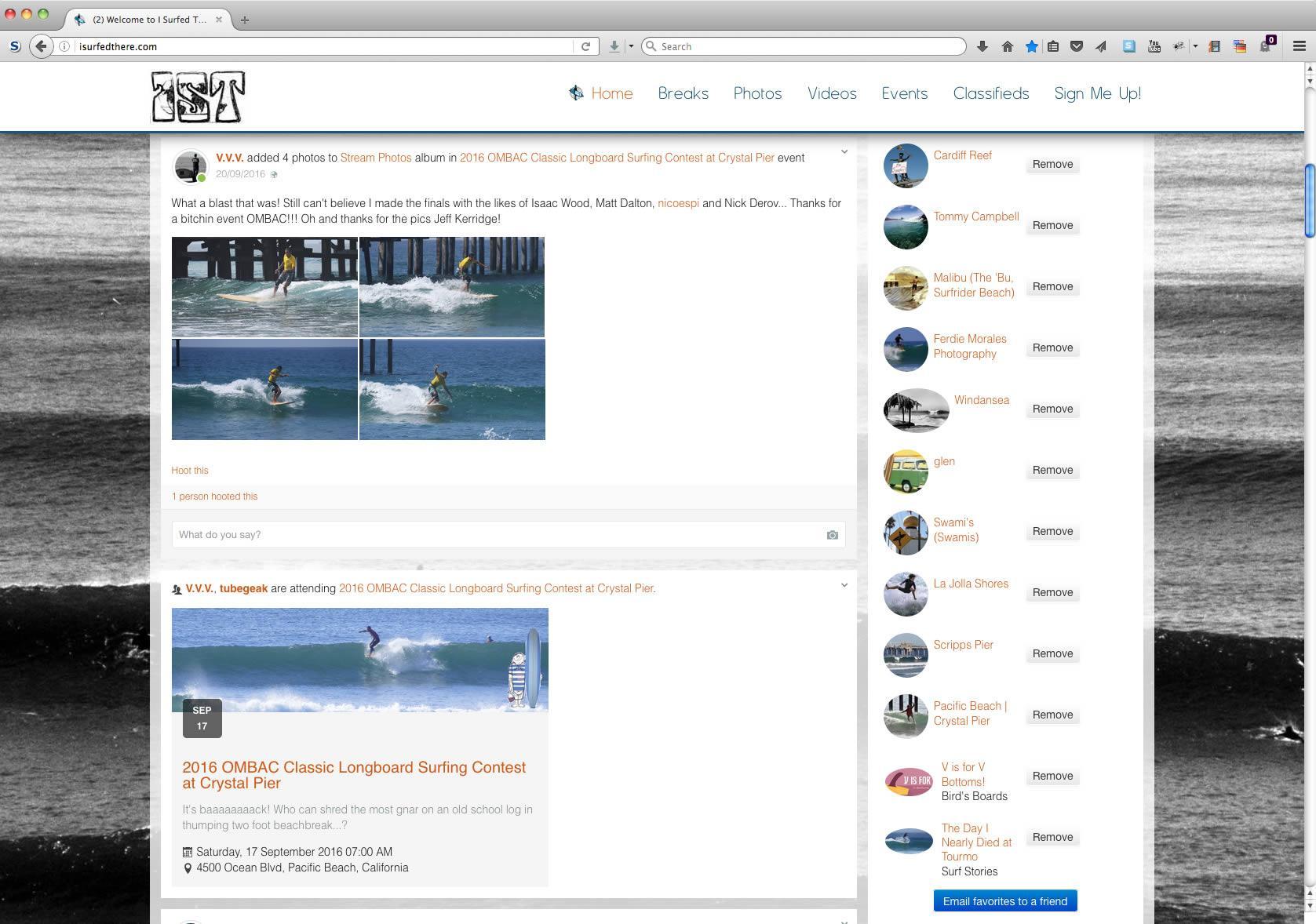 One of our pet projects is the website iSurfedThere.com. I started this with my good buddy Glen like eight years ago(!), and we are still committed to the concept, despite all of the ups and downs we've encountered while trying to build a worldwide social network on a shoestring budget.
One of our pet projects is the website iSurfedThere.com. I started this with my good buddy Glen like eight years ago(!), and we are still committed to the concept, despite all of the ups and downs we've encountered while trying to build a worldwide social network on a shoestring budget.
The core concept is pretty simple - a place to track all of the spots you've surfed.
Login | Out
Banter
-
Vince said MoreI've gotten a lot of mileage out of that... 2 weeks ago.
-
Herb Bradley said MoreNice Photo of me at the Pumphouse Brah.... 2 weeks ago.
-
Vince said MoreWell thank you Rob! Thursday, 20 November 2025
-
Rob said MoreWow, that’s a pretty awesome concept ? Thursday, 20 November 2025
-
Vince said MoreGood progress on that mold lately, stay... Wednesday, 05 November 2025

